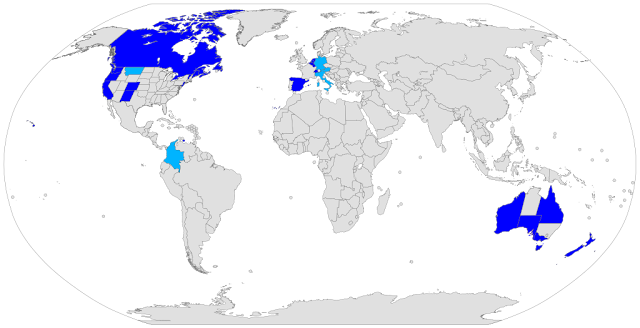Building or Working on YOUR Confidence - e.g. by Role Models
Now another year is ending. and 2024 will start soon.
I can, You can, we can start a new year with confidence by simply being open to ALL that can occur, change and shift in the upcoming 365 days.
We know that things can change in one day, so don’t let the idea of what you didn’t accomplish or didn’t finish stop you from knowing that it can and will still get done.
We all could use a few ways to start a new year with confidence. You can be confident in a new year no matter how things ended on December 31
What is confidence?
Start building or working on YOUR confidence
Confidence is an important and valued trait. A lack of confidence can be difficult, but there are ways to improve it. By practicing self-care and self-affirmations, building positive relationships, challenging yourself, and developing a growth mindset, you can work towards being more confident.
For one or two it is helpful having role models
I am not using this method of 'having a role model' on my own - but I know it is a great method for others. But I use and like the Design Thinking method.
The importance of good role models is simple. When a child or an adult has a positive role model, they are likely to engage in constructive actions like the person they look up to. Key to their development, people who have positive role models will pick up habits and even perspectives of adults that could last a lifetime.
Design Thinking method to think about or perhaps find a role model
The Role Model Method is a simple exercise - which will help you move closer to embodying the personal qualities you admire in others, and boost your confidence as you help yourself realize that you already have the seed for those qualities within yourself.
6 simple steps to use the Role Model Method
1st step - Identify 3 role models - ask yourself, "Who are my / your Top 3 Role Models?", "Who do you admire?", "Who impresses you.
Keep in mind - it doesn't matter whether these role models are real or in your imagination, someone you know or don't, in a film or book, alive or dead!
- -- -- -- -- -- -- -- -- -- -- -- -- -- -- -- -- -
2nd step - Identify 2 max 3 influencing people - ask yourself, "Who influenced you recently?", "Who has been most influential in your life over the last year, personally, and on your job, in your career, or in sports?"
- -- -- -- -- -- -- -- -- -- -- -- -- -- -- -- -- -
3rd step - Identify what impacted you most - ask yourself, consider and write down:
- What about these people has impacted you?
- What do you most admire about your role models above and why?
- What could you learn from them?
- -- -- -- -- -- -- -- -- -- -- -- -- -- -- -- -- -
- -- -- -- -- -- -- -- -- -- -- -- -- -- -- -- -- -
5th step - Brainstorm regarding qualities - ask yourself regarding status quo and aims. How can you bring some of those qualities into your life
Start with self-awareness: Which qualities can you see in others, what you have the capacity for in yourself. This means which quality you already have - or can develop,
THEN ask yourself to write out 5 ways you could begin to bring some of those qualities into your everyday life.
How could you adapt what your role models do to fit you and your life? How could you take that quality and embody it more in your life?
- -- -- -- -- -- -- -- -- -- -- -- -- -- -- -- -- -
6th step - Identify at least 1 action - finishing the method, which specific action will you choose to start with? ... move forwards with? ... and what might be / will be next and next but one action?
You can find role models everywhere
Above I mentioned that you should keep in mind - it doesn't matter whether these role models are real or in your imagination, someone you know or don't, in a film or book, alive or dead!
In the past, the dominant perspective on disability was one of medicine, where the person with the handicap was considered sick and their condition was an issue or problem of or with the individual. Fear of being different and the desire to fit in were other factors that contributed to perceptions of disability. These negative views influenced the way people interacted with individuals with disabilities and impacted the way people with disabilities viewed their own roles in society, including their involvement in jobs, sport, and everyday life.
Thankfully, in more recent times, there has been a push to promote a social rather than medical perspective on disability. According to the social perspective, societal obstacles erected against individuals with disabilities impose greater limitations than the impairments themselves. People now have the freedom or it is growing to access and engage in all spheres of society, including every level of and in life, as a result of this shift in perspective.
Long story short I have anyway issues with the grammatical structure of the word, we can say clearly that when ‘dis’ prefix is used implies negative association or lack of something, e.g. distrust, discourage, disconnect, disorder, dis... . - To be honest, I talked to so many people and most of them never perceived themselves as a disabled, dis-blablabla person first, even though they have been diagnosed with any symptoms when they were younger. Just like everyone they know they would rather be perceived as the person who they are and not be a subject to labels and prejudice from the moment someone sees them. Everyone has certain dis...... whatever regarding seeing, hearing, smelling, saying, doing, thinking. perceiving themselves and others.
So - now please look at the following list of personalities - and you will see that each might be a role model for you, others ...
Famous People with disabilities who are from time to time my role models ...

The picture above is an Infographic on World Famous People with Disabilities published by WeCapable.com
Other articles in this context:
Articles about ConfidenceArticles about Self-Reflection and Self-Awareness






Comments
Post a Comment